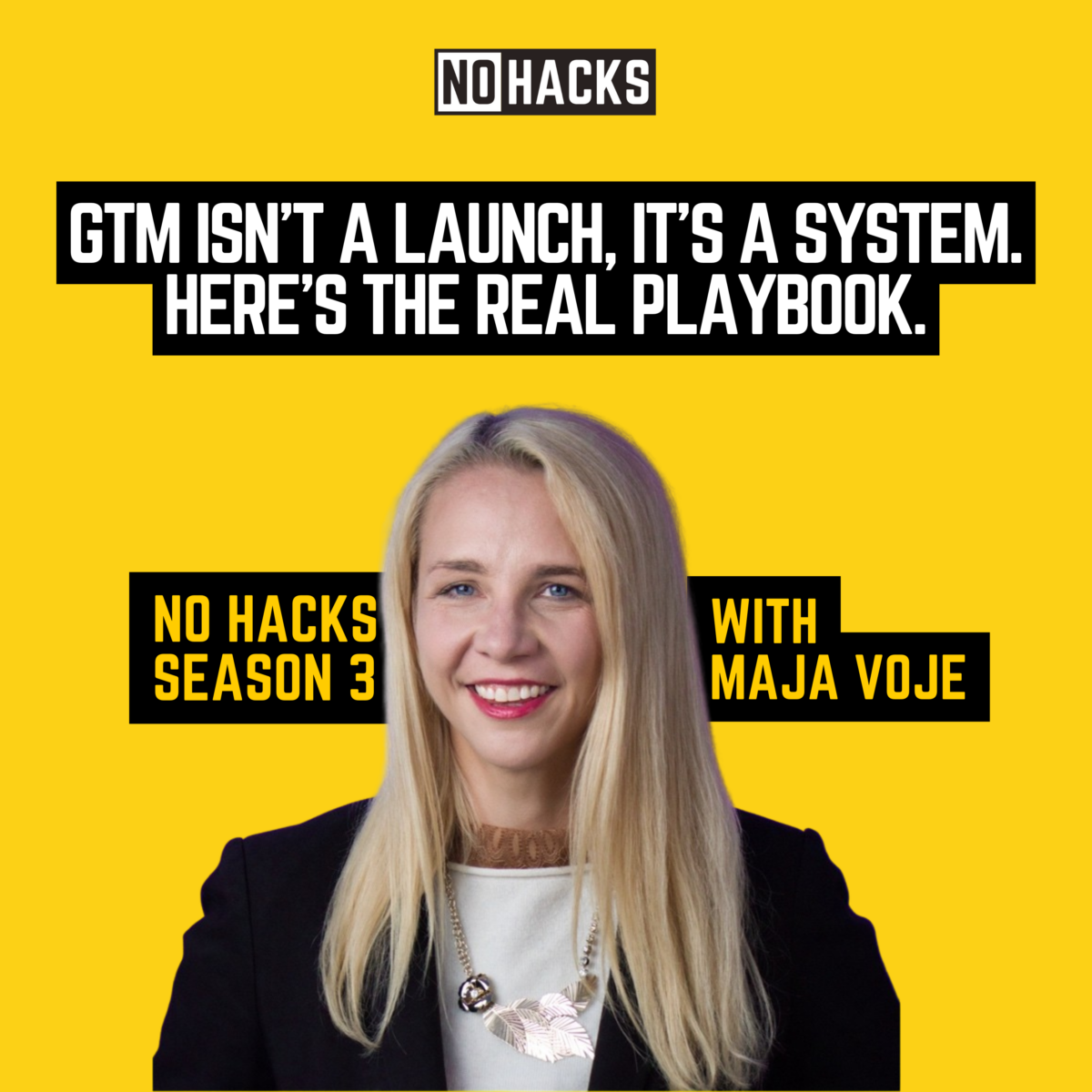Most teams treat “go-to-market” like a milestone.
Launch day. The day you hit publish on Product Hunt, push an email campaign, maybe even run some ads. It’s the day the world sees your product.
But according to Maja Voje, that’s not go-to-market. That’s just… Tuesday.
In this episode of No Hacks, I had the chance to sit down with Maja — a globally respected go-to-market strategist who’s worked with over 750 companies (yes, really), including names like Google, Rocket Internet, and Bayer. She’s also the author of GTM Strategist, a bestselling book packed with templates and systems used by thousands of teams around the world.
What makes Maja’s perspective so sharp is that it’s grounded in real experience. She’s helped early-stage founders find their first five customers and coached Fortune 500 teams on how to rethink their GTM playbook. And she’s not afraid to say the quiet part out loud: most teams are doing GTM completely wrong.
Launch ≠ GTM
The first major mindset shift? Realizing that GTM isn’t an event — it’s a system.
Maja breaks it down into stages: product-solution fit, product-market fit, go-to-market fit, and finally, scale. Each phase has its own challenges, and confusing one for another is where most teams get stuck.
Many founders, especially in tech, believe that once the product is ready and they have a Stripe checkout and a landing page, they’re good to go. But they haven’t tested messaging. They haven’t found their ideal customer profile. They haven’t figured out pricing, onboarding, or which channel will actually get them in front of users.
And worst of all — they haven’t talked to enough people.
Early Adopters vs. Ideal Customers
This was one of the most useful distinctions in our conversation: the difference between your early customer profile and your ideal customer profile.
Maja explains that early adopters are the people who will say “yes” to your product as it is today. Maybe it’s buggy, maybe it’s limited — but they’re excited to be in early. They’ll give you feedback. They’ll help you build. Most importantly, they’ll give you traction.
Ideal customers? That’s later. That’s scale. You don’t pitch Salesforce when you’ve barely got your onboarding working.
Start small, she says — but with purpose. Choose a “beachhead” segment, where pain is high, willingness to pay is real, and your product can solve a very specific need. That’s how you get motion. That’s how you start building a repeatable engine.
Focus > Scale
One of the strongest themes from the episode was how often companies try to scale before they’ve actually figured out what works.
“We want to be everywhere,” Maja says. “But that doesn’t mean you should be everywhere on Day One.”
Instead, she encourages teams to go narrow. One channel. One segment. One motion. Run it for a quarter. Do the reps. Build the muscle. Only then do you earn the right to expand.
It’s advice that sounds obvious until you see how few companies actually follow it. Chasing virality, burning money on ads, building features for customers you don’t have — these are the traps that kill good products. A solid GTM strategy helps you avoid them.
AI: A Superpower or a Distraction?
We also talked about the role AI plays in go-to-market strategy today — and the answer is more nuanced than you might think.
Used well, AI can be a research powerhouse, a messaging accelerator, and a testing machine. Maja mentioned using it for role-playing customer interviews, generating positioning drafts, and even running basic outreach flows.
But used poorly? It becomes noise. Lazy prompts, generic content, emotionless cold emails — all of it erodes trust and misses the point of go-to-market: building real connection with real people.
AI can help you think faster, but it can’t think for you. Strategy still matters. Human creativity still matters. And maybe now more than ever, clarity matters.
Systems That Scale
If there’s one thing to take from this episode, it’s this: go-to-market isn’t something you do once. It’s something you build to do again and again.
Maja’s approach focuses on building systems that can flex, adapt, and grow with your product. That means setting up ways to test and learn, rather than chasing one-off wins. It means focusing on what works — and doubling down when it does.
Most importantly, it means talking to your customers. Not once. Not just at launch. All the time.
Whether you’re in the earliest stage of building something new or you’ve hit a plateau and don’t know what’s next, this conversation will make you rethink how you approach growth — and what going to market really looks like.
Hit play. This one’s worth it.

